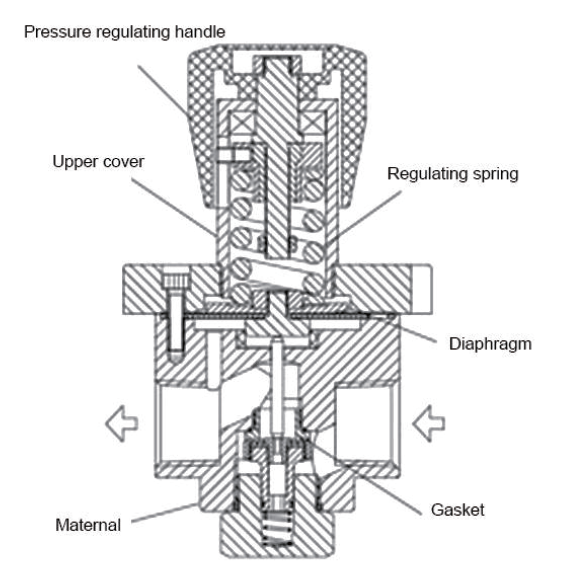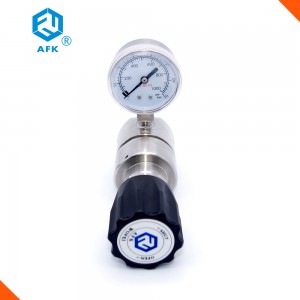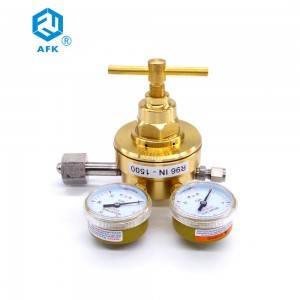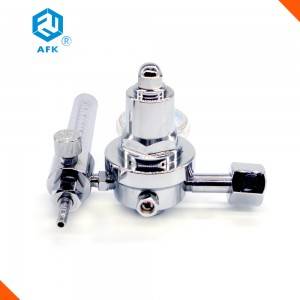High Flow 1″Stainless Steel Single Stage Pressure Regulator
R61 pressure regulator
R61 Serie stainless steel pressure reducer has a diaphragm pressure reducing construction, stable output pressure. It is suitable for mass flow output working conditions.

Design Features
| 1 | Single-stage pressure-reducing structure |
| 2 | Diaphragm with Nylon and NBR two layers construction |
| 3 | Body thread: inlet and outlet connection1” NPT(F) |
| 4 | Pressure gauge connection: 1/4″ NPT(F) |
| 5 | Panel mounting and wall mounting available |
Application
gas bus-bar,petrochemical industry,testing equipment
Specification
| 1 | Maximum inlet pressure | 500psig |
| 2 | Output pressure | 0~25, 0~50, 0~100,0~125, 0~250psig |
| 3 | Safety testing pressure | 1.5 times of maximum inlet pressure |
| 4 | Working temperature | -10~+250 deg F(-23~+121 Deg C) |
| 5 | Leakage rate | bubble tight |
| 6 | Cv value | 5.1 |
Materials of Main Structure
| 1 | body | 316L, Brass |
| 2 | bonnet | 316L, Brass |
| 3 | diaphragm | NBR(Nylon inside) |
| 4 | seat | NBR |
| 5 | spring | 316L |
| 6 | stem | 316L |
Ordering Information
| R61 | L | B | F | G | G | 06 | 06 |
| Item | Body Material | Body Hole | Inlet Pressure | Outlet Pressure | Pressure Gauge | Inlet Size | Outlet Size |
| R61 | L:316 | A | F:500psig | G:0~250psig | G:MPa gauge | 06:3/4″NPT(F) | 06:3/4″NPT(F) |
| B:brass | B | H:0~250psig | P:Psig/bar gauge | 07:3/4″NPT(M) | 07:3/4″NPT(M) | ||
| C | I:0~100psig | W:No gauge | 08:1″NPT(F) | 08:1″NPT(F) | |||
| K:0~50psig | 09:1″NPT(F) | 09:1″NPT(F) | |||||
| L:0~25psig |
There are two types of ventilation in chemical PCR laboratories, namely local exhaust and whole-room ventilation. Local exhaust is generated immediately after the harmful substances near the discharge, this way can be less air volume to remove a large number of harmful substances, energy saving and good results, is a feasible and economic way to improve the existing laboratory conditions, but also may be the best way to adapt to the construction of new PCR laboratory ventilation. For some experiments can not use local exhaust, or local exhaust can not meet the exhaust requirements, the use of whole-room ventilation.









